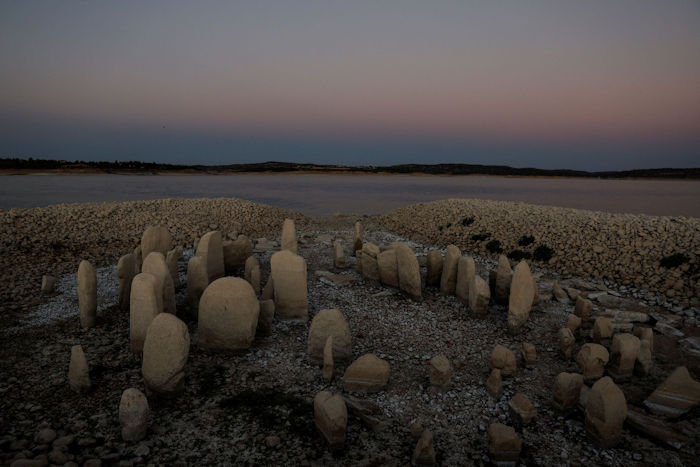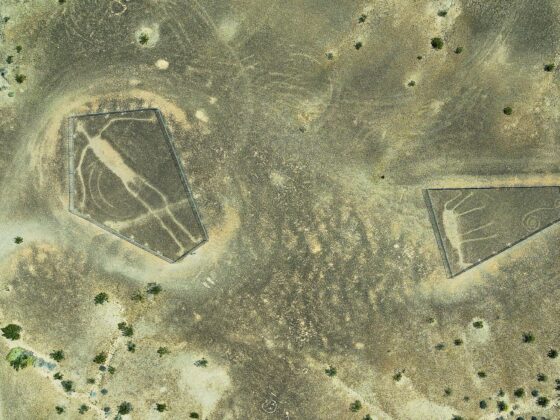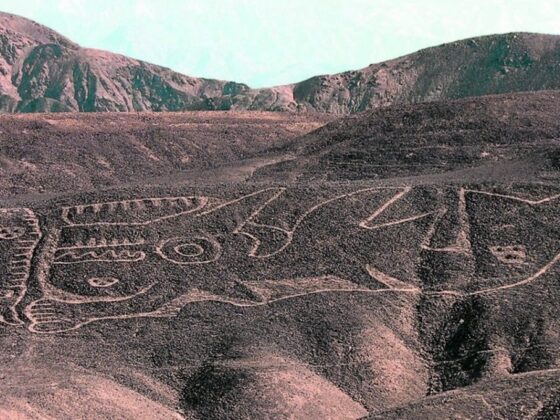The summer brought severe drought conditions to many parts of Europe, with Spain experiencing its worst dry spell in decades. While the drought has caused significant hardship, it has also led to an unexpected archaeological revelation: the reemergence of the Dolmen of Guadalperal, often referred to as the “Spanish Stonehenge.”
This ancient megalithic monument, dating back to around 5000 BCE, has resurfaced from the parched bed of the Valdecañas reservoir in western Spain. The circular structure, believed to have once been enclosed, consists of a large domed boulder supported by hundreds of vertically placed stones known as menhirs.
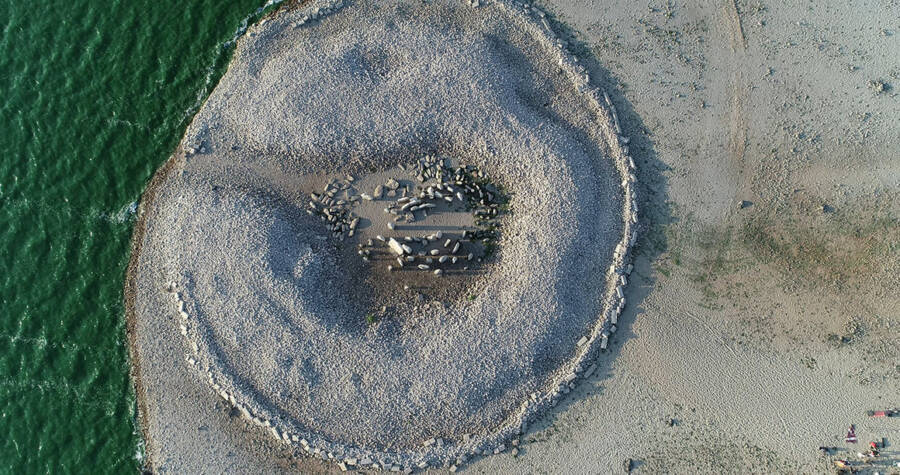
First discovered by German archaeologist Hugo Obermaier in 1926, the Dolmen of Guadalperal was submerged in 1963 as part of a rural development project during Francisco Franco’s dictatorship. Since then, it has only been fully visible four times, making its current exposure a rare opportunity for researchers.
The monument now sits exposed in a corner of the Valdecanas reservoir in the central province of Caceres, where water levels have dropped to just 28% of capacity. This unexpected reveal has sparked a race against time for archaeologists like Enrique Cedillo from Madrid’s Complutense University, who are eager to study the site before it becomes submerged again.
The Dolmen of Guadalperal offers valuable insights into the history of Spain’s megalithic builders, a group about whom much remains unknown despite the presence of numerous dolmens across Europe. Its reappearance coincides with other recent archaeological discoveries in Spain, including a huge megalithic complex of 500 stones found in the Huelva province, potentially one of the largest of its kind in Europe.
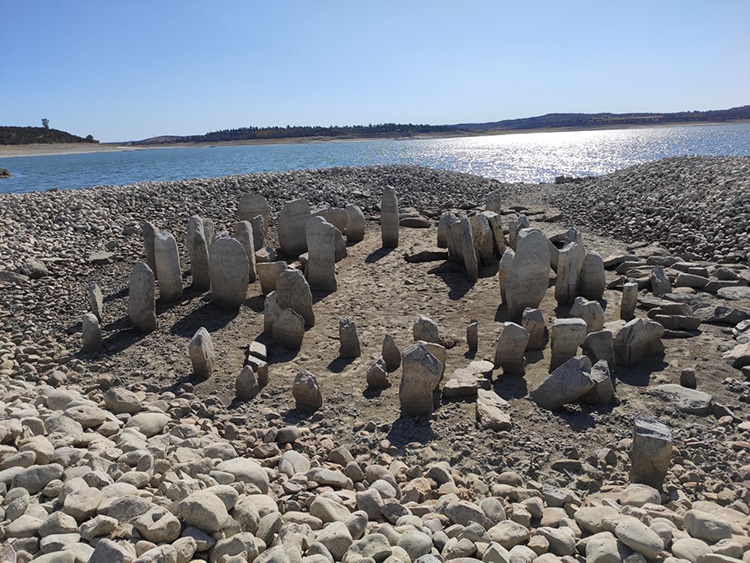
While the drought has provided this unique opportunity for archaeological study, it has also brought significant challenges to the region. Local farmers are struggling with water shortages, affecting livestock and crops. Climate scientists warn that the Iberian peninsula is experiencing its driest conditions in 1,200 years, with winter rains expected to diminish further according to a study published in the Nature Geoscience journal.
As researchers rush to gather data from the exposed monument, discussions are underway about potentially moving the Guadalperal stones to a museum or another location on dry land to preserve them for future study. Meanwhile, the site’s emergence has created a temporary boom in local tourism, with boat tour operators shuttling curious visitors to view this ancient wonder.
